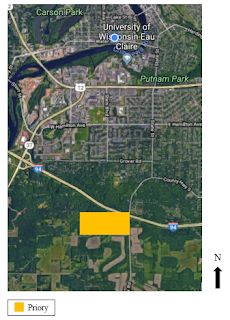Lab 4: Introduction to Pix4D

Introduction to Pix4D Introduction A premium software for analyzing unmanned aerial system (UAS) data is Pix4D. Pix4D creates images by using thousands of common points between images. This software uses matching keypoints to create 3D points. Matching keypoints are two points located on different images that are the same. In this introduction lab, the UAS data was already proceeded by Dr. Joseph Hupy. The data structure of processed UAS data in Pix4D is exported in the same structure. Four folders and a text document will be created (Figure 1). The files will be 1_initial, 2_densification, 3_dsm_ortho, and temp. These files contained all of the outputs needed to complete the following introduction lab. In this lab, the UAS dataset was of a mine site in Eau Claire, Wisconsin. The main task of Pix4D was to assess the stockpiles present...


